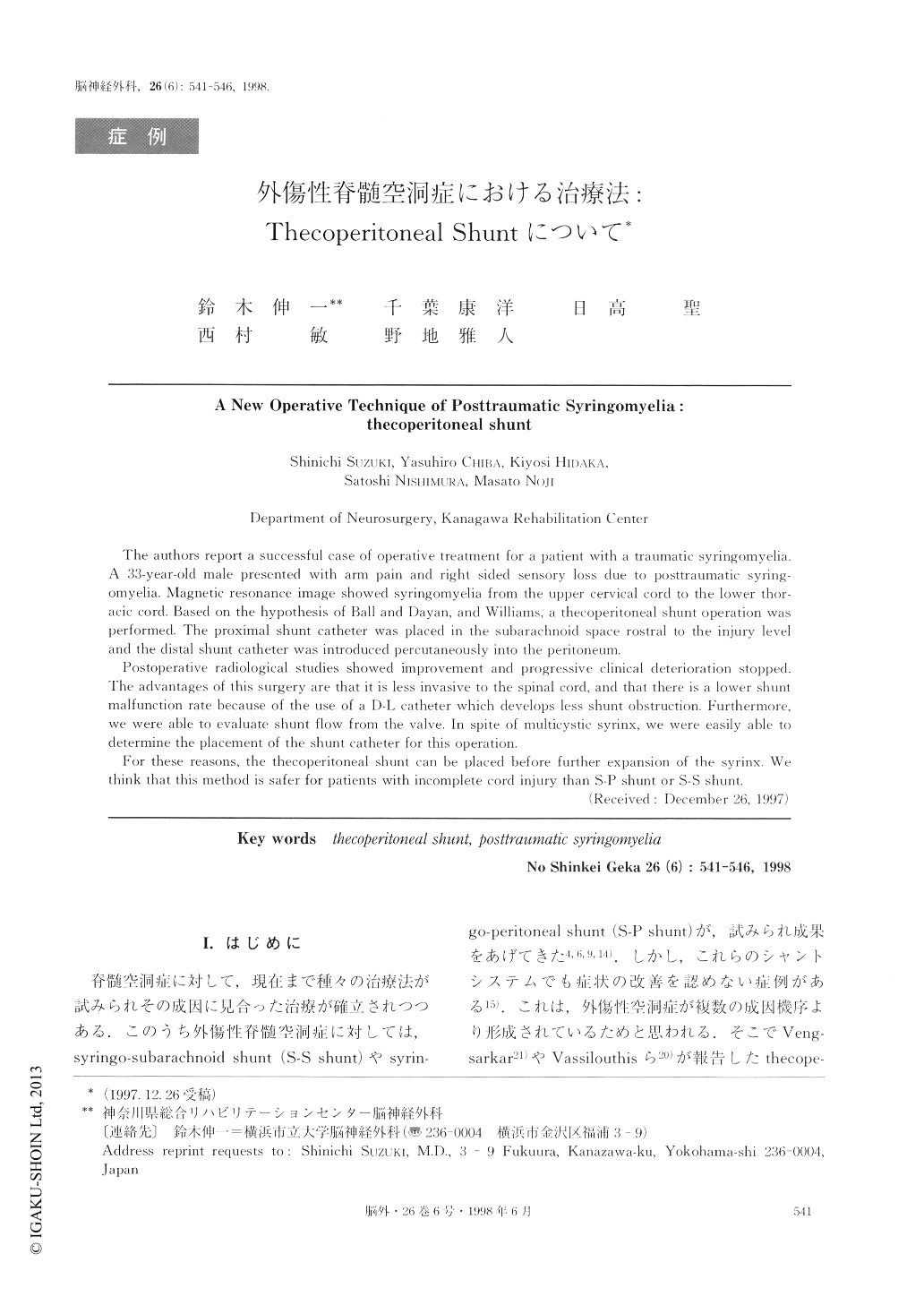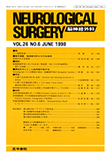Japanese
English
- 有料閲覧
- Abstract 文献概要
- 1ページ目 Look Inside
I.はじめに
脊髄空洞症に対して,現在まで種々の治療法が試みられその成因に見合った治療が確立されつつある.このうち外傷性脊髄空洞症に対しては,syringo-subarachnoid shunt(S-S shunt)やsyrin-go-peritoneal shunt(S-P shunt)が,試みられ成果をあげてきた4,6,9,14).しかし,これらのシャントシステムでも症状の改善を認めない症例がある15).これは,外傷性空洞症が複数の成因機序より形成されているためと思われる.そこでVeng-sarkar21)やVassilouthisら20)が報告したthecope-ritoneal shuntを造設し画像上の改善と症状の軽減がみられた1例を経験した.これは,Ball andDayanの仮説やWilliamsの仮説によるメカニズムに着目したものであり,シャントシステムの利点と有効性を空洞症の成因に照らしあわせながら,若干の文献考察をまじえて報告する.
The authors report a successful case of operative treatment for a patient with a traumatic. syringomyelia. A 33-year-old male presented with arm pain and right sided sensory loss due to posttraumatic syring-omyelia. Magnetic resonance image showed syringomyelia from the upper cervical cord to the lower thor-acic cord. Based on the hypothesis of Ball and Dayan, and Williams, a thecoperitoneal shunt operation wasperformed. The proximal shunt catheter was placed in the subarachnoid space rostral to the injury leveland the distal shunt catheter was introduced percutaneously into the peritoneum.
Postoperative radiological studies showed improvement and progressive clinical deterioration stopped.The advantages of this surgery are that it is less invasive to the spinal cord, and that there is a lower shuntmalfunction rate because of the use of a D-L, catheter which develops less shunt obstruction. Furthermore,we were able to evaluate shunt flow from the valve. In spite of multicystic syrinx, we were easily able todetermine the placement of the shunt catheter for this operation.
For these reasons, the thecoperitoneal shunt can be placed before further expansion of the syrinx. Wethink that this method is safer for patients with incomplete cord injury than S-P shunt or S-S shunt.

Copyright © 1998, Igaku-Shoin Ltd. All rights reserved.


